Hong Kong-bound China Airlines 605 skids off Kai Tak Airport runway, falls nose-first into Victoria Harbour — from the SCMP archive
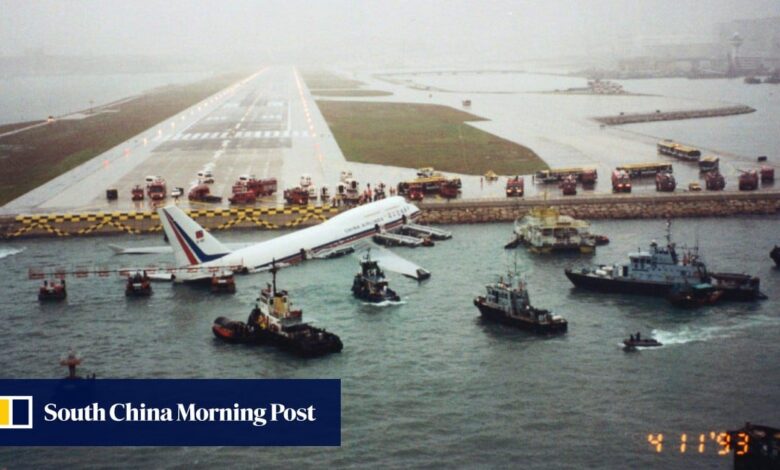
[ad_1]
Flight CAL 605 from Taipei touched down at 11.37am, when the Typhoon Signal Number 3 was in force and Kai Tak was shrouded in fog and being lashed by heavy rain.
The Hong Kong general manager for China Airlines, Alex Liu Nai-heng, read a statement saying: “At the time, the runway was saturated with rainwater and there were strong crosswinds, making the surface very slippery.
“The plane slipped off the runway and … fell into the sea.”
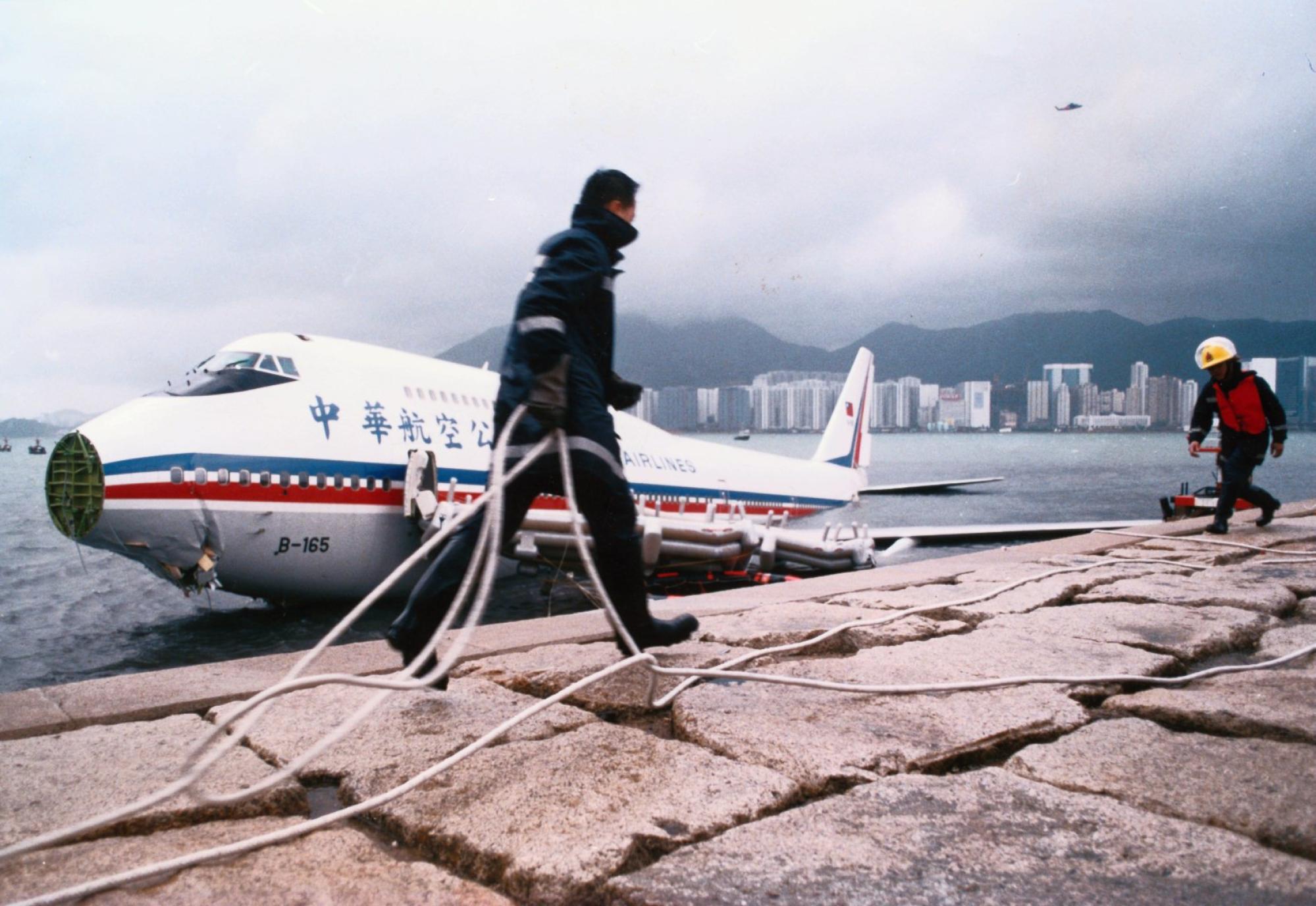
Later he said: “According to the captain, just after he touched down … he felt he could not make a complete stop.
“He used the brakes, he used the reverse thrust. He tried his best, but he could not stop the aircraft.”
The pilot had reached the end of the runway and veered left to slow the plane and try to avoid rushing over the runway edge.
“If the plane had carried on … it would have been a lot worse,” Mr Liu said.
Captain Liu, 47, was a Taiwanese Air Force veteran and has been flying for China Airlines for 10 years and is now an instructor.
Aviation experts said crosswinds could make a plane unsteady in its final approach and could cause speed changes of up to 150km/h.
It was very hard to see so I think maybe they [the pilots] didn’t know or see where the end of the runway was
Only 23 people reported injuries in the accident.
A 47-year-old woman and 45-year-old man were admitted to Queen Elizabeth Hospital in fair condition.
The others were taken to hospital after clambering down the jet’s safety chutes and were released after treatment.
The injured and the other 273 passengers and crew were rescued within about 30 minutes of the crash.
The first of 12 fire engines, two fire boats and nine ambulances and more than 150 rescuers arrived just one minute from the alarm being raised.
The plane had gone in nose-first, and after bobbing on the sea, was turned back towards the runway wall, enabling most people to clamber directly ashore.
The others were loaded in police rafts and ferried to the bank.
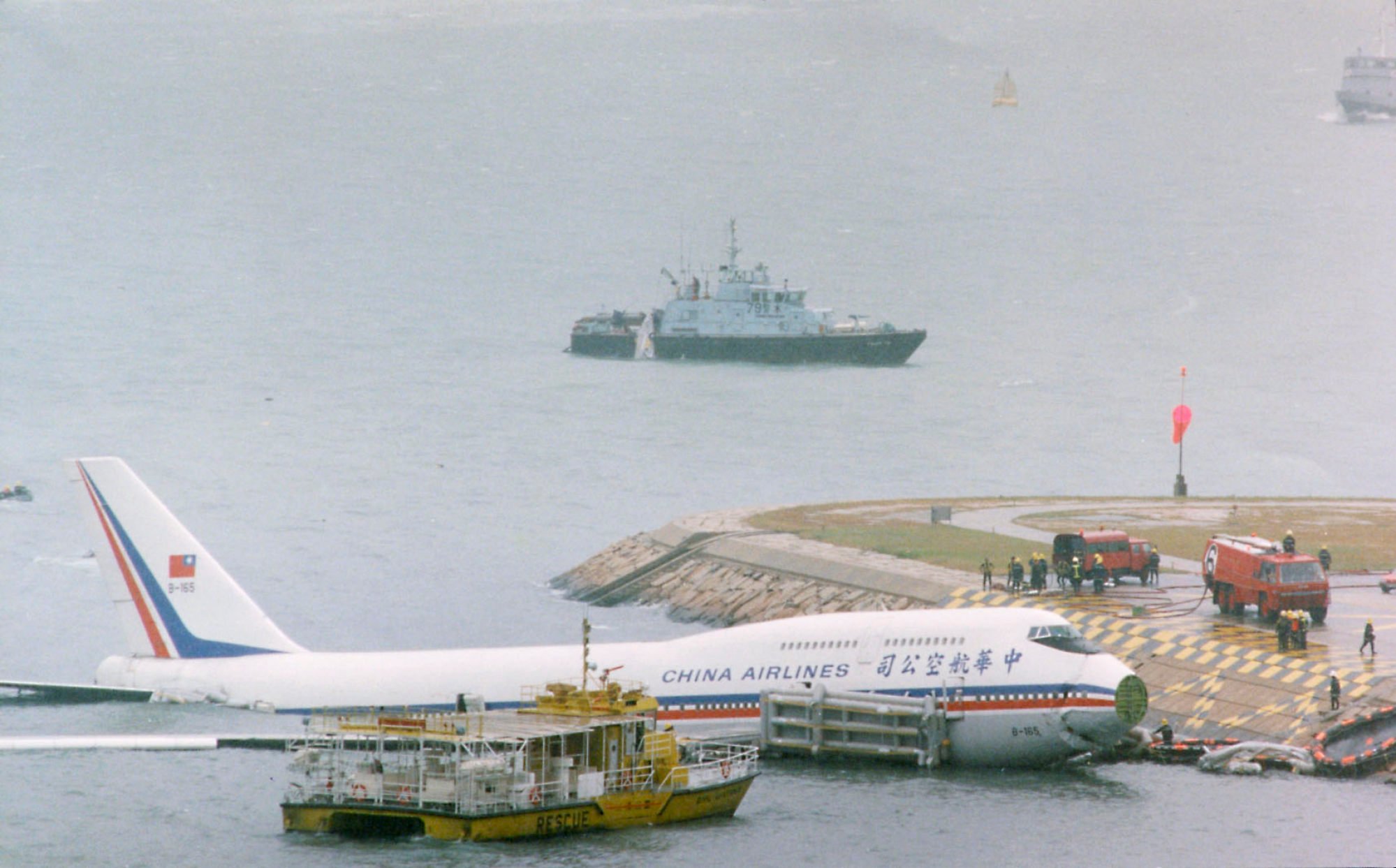
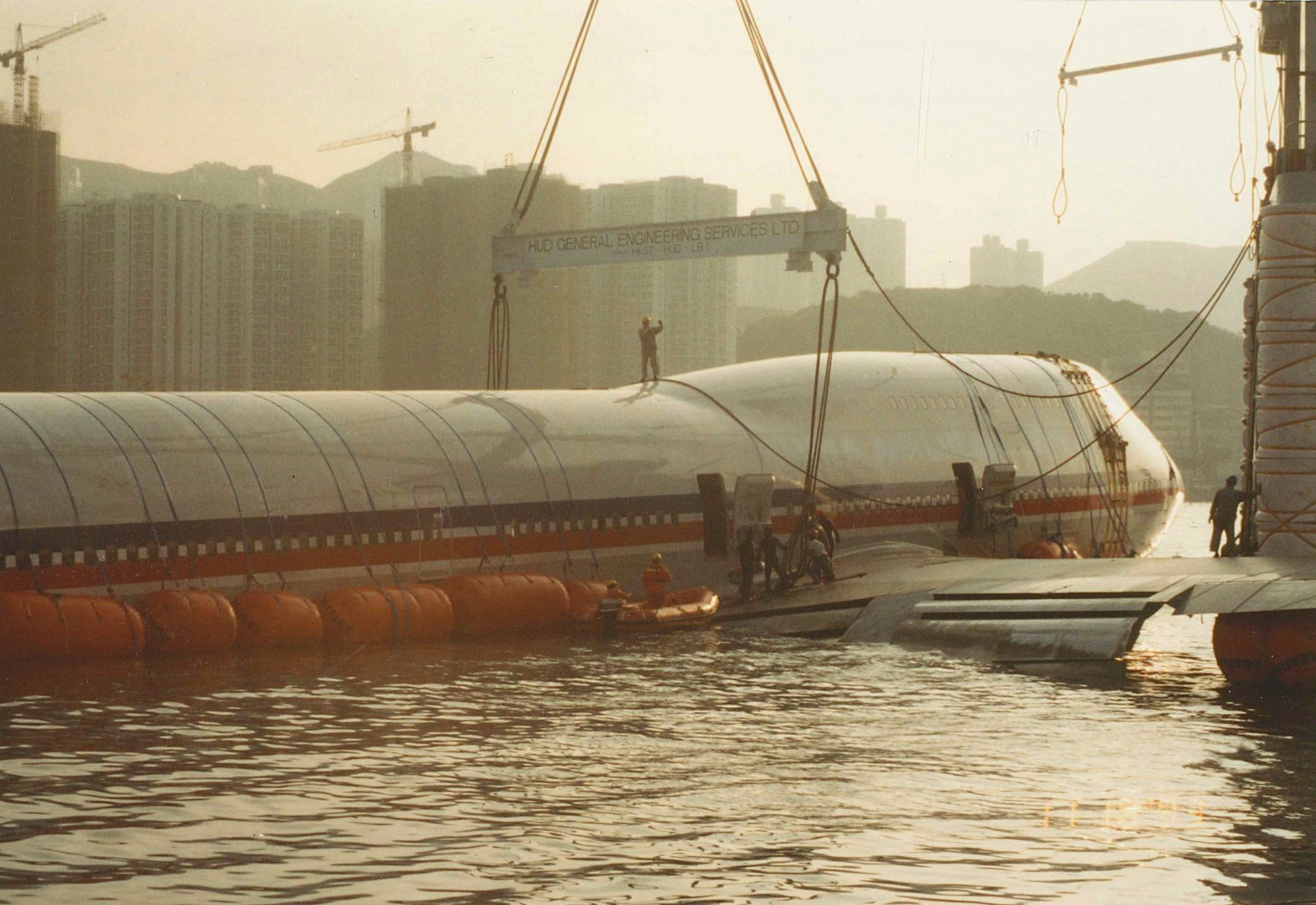
Newspaper vendor Ng Yuk-wan, who was working just 250 metres from the end of the runway, said she saw the plane roll off the tarmac into the water.
“It was very hard to see so I think maybe they [the pilots] didn’t know or see where the end of the runway was,” she said.
However, the company moved quickly to defend Captain Liu’s actions, saying both the plane and its crew performed “faultlessly”.
“The pilot did everything correctly and the plane was very new and everything seemed to work,” a statement said.
When asked if wind shear across the exposed runway was the major factor, the company representative, Mr Liu, said: “According to the pilot, yes.”
Mr Liu said there was no way of predicting such violent crosswinds and he was happy with the control tower allowing the landing.
“We’ve landed in these conditions many times before,” he said.
Uneasy passengers feared the worst
Many passengers pulled from the wrecked aircraft said they were uneasy about their safety even before the flight touched down at Kai Tak.
British businessman Kenny Bell, who uses Kai Tak frequently, said: “I thought we were very close to the top of the buildings as we came in.
“The turbulence was very bad. I heard the wheels drop down, and felt them touch the ground. The pilot put on the reverse thrust but we didn’t seem to slow down.
“I was sitting by the wing, and I saw it was still banking upwards.
“I’ve never seen that before, and it was then that I thought we could have a bit of a problem.
“The pilot did a good job. He turned the plane away from the deep water, and put us in the shallow end.”

The passengers were not given any warning about the crash and they did not have a chance to brace themselves for the impact. “There was no time for that,” said Mr Bell.
The plane came to rest with a jolt, but not strong enough to dislodge the overhead lockers.
Mr Bell, from Poole in Dorset, said: “In the life raft there was a baby crying, but the other people were very calm.
“When we got to the shore some people needed oxygen. The rest of us waited for the coach to come to take us to the terminal.”
Taiwanese passenger Wong Wai-lin, 50, said the plane went nose-first into the water.
“The first few rows were submerged with sea water as holes had opened up in the body of the plane.
“I was worrying that the plane would explode or sink. I sat there hoping we would get to the runway quickly.”
Mr Wong sustained a 5cm cut on his right cheek but was not sure how he had injured himself.
“Whether it was glass or other stuff I don’t know, it came too quickly. A flight attendant asked me why my face was covered with blood.
“I told her that I did not know – all I knew was that I couldn’t find one of my shoes.”
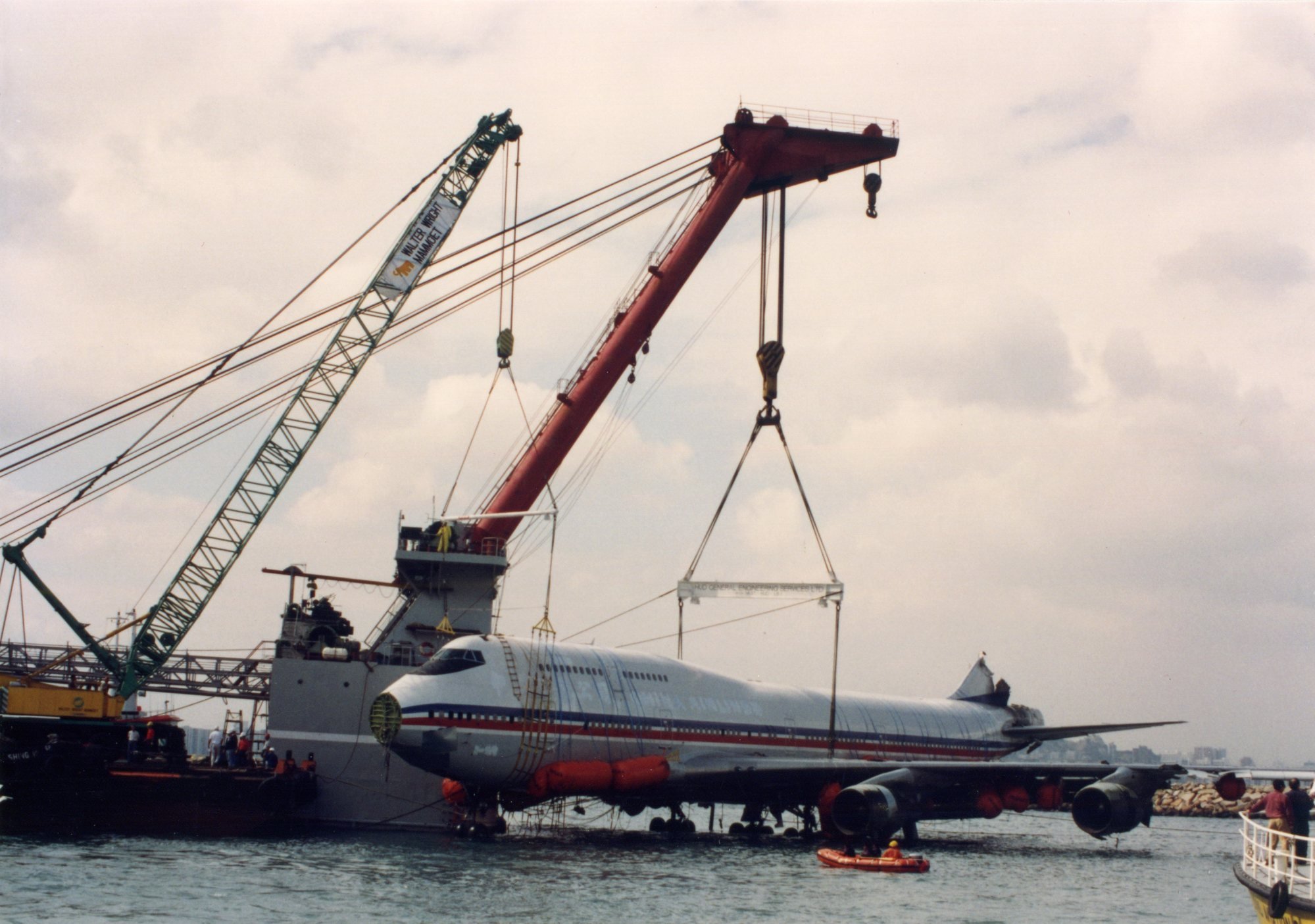
Ex-Nationalist soldier Lo Chen-jung, 65, helped other passengers to don their lifejackets while the flight attendants released the emergency doors and life rafts.
“The cabin was filled with noise of shouts, screams and crying. Some simply could not hear the stewardesses’ instructions.
“Several women sitting near me were too nervous to pull out the life jackets. They tried the oxygen masks. I comforted them and helped them put on the jackets.
“Some of them wanted to jump out. Stupid. We were at sea. I pulled them back and told them to wait to be rescued.
“Hong Kong rescuers had been very efficient. It was less than three minutes and we could go onto the police launch. But it had been like waiting for three years.”
Still dressed in a soaked jacket and trousers, he walked out to the arrival hall on his own and later in the afternoon took a train to Guangzhou.
Among the youngest passengers was four-year-old Kao Pei-chun, who obviously did not know what had happened.
“It was my first time on a plane. I liked the snack,” he said, and asked his father, who had been waiting anxiously in the arrival hall for more than two hours, for a bottle of milk.
[ad_2]
Source link





